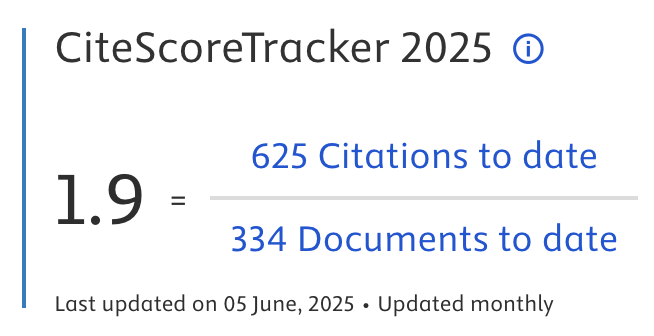Lower Limb Prosthetics using Optimized Deep Learning Model – a Pathway Towards SDG Good Health and Well Being
Abstract
This research article aimed at revolutionizing prosthetic leg technologies to enhance accessibility, affordability, and environmental sustainability. With a focus on addressing the diverse needs of amputees globally, the program integrates principles of eco-design, community engagement, technological innovation, and policy advocacy to foster inclusive and resilient societies which leads to the attainment of Sustainable Development Goal (SDG) Good Health and Well Being. Lower Limb Prosthetics of Activity Recognition is an innovative field combining prosthetic technology and activity recognition systems. The challenge of activity recognition in lower limb prosthetics to optimize the performance and responsiveness of mock limbs. In this work, the problem is overcome by using the Optimized deep learning technique, which improves activity recognition in lower limb prosthetics. The proposed methodology consists of (1) Pre-processing (2) Feature extraction (3) Feature classification. The collected images are pre-processed via improved wavelet demonizing and Empirical mode decomposition. From pre-processed data, the features are extracted using an improved sliding window method. The obtained extracted features are moved on to the Feature classification process. The classification process is done by the Optimized Long short- term memory. They are designed to better capture dependencies and patterns in sequential data, which makes them highly effective for tasks involving time series, natural language processing and other sequential data problems. Optimization can be done by proper data preprocessing and tuning the data from data extraction. The weight of the LSTM model is optimized to improve the performance of this model by the improved Black Window Optimization Algorithm. The main contributions of the paper are to obtain the best classification accuracy, an optimized LSTM model is introduced in this paper, and the weight of the LSTM model is enhanced by the improved Black Window Optimization algorithm. It improves the performance of the proposed system.
Article Metrics
Abstract: 236 Viewers PDF: 94 ViewersKeywords
Lower Limb Prosthetics; Activity Recognition; Improved Black Window Optimization; Optimized LST; Process Innovation
Full Text:
PDF
DOI:
https://doi.org/10.47738/jads.v5i3.239
Citation Analysis:
Refbacks
- There are currently no refbacks.

Journal of Applied Data Sciences
| ISSN | : | 2723-6471 (Online) |
| Collaborated with | : | Computer Science and Systems Information Technology, King Abdulaziz University, Kingdom of Saudi Arabia. |
| Publisher | : | Bright Publisher |
| Website | : | http://bright-journal.org/JADS |
| : | taqwa@amikompurwokerto.ac.id (principal contact) | |
| support@bright-journal.org (technical issues) |
 This work is licensed under a Creative Commons Attribution-ShareAlike 4.0
This work is licensed under a Creative Commons Attribution-ShareAlike 4.0





.png)